We hope that you enjoy reading and learning from this article about 4 North Carolina Natural Marvels that we present to you. It was our pleasure to compile it for you. It’s also our hope that you come away with a greater appreciation for the beauty of the region.
It’s further true that these few sites mentioned here represent the barest fraction of the natural beauty to be encountered in this part of the globe. We feel, however, that the features mentioned here constitute good examples for your viewing and reading pleasure.
New River
New River Facts
- Leading off this article about 4 North Carolina Natural marvels comes the majestic, but little-known, feature deceptively named the New River.
- This wonder of Nature, quite ironically, actually bears a potentially deceptive name. That’s due to the presence of a certain amount of controversy surrounding its exact age. Some, but not all, geologists consider it one of the oldest rivers on earth.
- Regardless of its status in that regard, however, this amazing work of geological forces still stands out from many similar features in the region. The body of water has long served as an important corridor for the spreading of flora and fauna through the region.
- Several portions of its length now hold man-made dams, for hydroelectricity generation. Some of the surrounding ridges, however, also serve as home to uncommon plants. Thankfully, great care has therefore been taken to preserve these native species.
- Local Native American tribes new of its presence for centuries prior to the arrival of European settlers, of course. The first recorded sighting of it by outsiders occurred in 1671. At that time, members of a fur trading expedition found and explored parts of it.
- Today, local residents greatly enjoy and appreciate its natural beauty. This further takes many forms. These frequently include such activities as kayaking and rafting. Numerous large, open ledges also dot its length, allowing for the creation of fabulous viewing sites.
- The origins of the name New River itself remain undetermined with complete certainty. One theory purports that it derives from a word in the language of the local tribes that means new waters. Several other theories, however, propose other origins.
New River Physical Description
While it’s certainly not the longest river in the world, the New River nevertheless boasts a length that’s quite respectable. Although it takes a somewhat winding course, the overall length of this flow of water measures out to approximately 360 mi (580 km).
It also stands out for another reason. The direction of its flow further distinguishes it from the many other rivers in its part of the world. That’s because it’s believed to be the only major river in the country in which it appears to primarily flow in a northward direction.
Along its wending course, the New River also cuts its way through numerous gorges. Some of these have an impressive depth, with the local walls rising as much as 1,500 ft (457.2 m) above the surface of the water. It also boast numerous areas of powerful rapids.
Its depth varies, in some cases extremely. Along most of its course, the depth varies, reaching as much as 100 ft (30.5 m). In a few sections, this dwindles to no more than a few inches! In areas other than around the rapids, the river typically has a slow, gentle flow.
New River Location, Formation, and Ecology
The controversially-named New River formed in a region of the world well known for its scenic beauty. This region consists of a long-settled portion of North America. More precisely, the natural marvel formed in the southeast portion of the United States.
There, this remarkable flow of water further finds its presence restricted to just 3 states. These fortunate states consist of North Carolina, Virginia, and West Virginia. Coincidentally, the meandering path it takes flows through far corners of all three of these states.
This wonder originates in a portion of the Blue Ridge Mountains in northwestern North Carolina, themselves part of the Appalachian Mountains. The spot from which it flows, the headwaters, in fact, lies only a short distance from the popular resort town of Boone.
Varying estimates place its time of origin to between 10 and 360 million years ago. During this time, the ancient Appalachian Mountains continued their slow yet inexorable push upward. This gradually altered the direction of its flow, and shortened its length.
The amazing New River also flows through the heart of the largest block of relatively unfragmented, mid-latitude forest still remaining in the world. This serves as home to countless plant varieties, including dozens of different species of trees, largely hardwoods.
Even more impressively, its banks provide a home to a relatively large abundance of flora, both in numbers of species, and sheer volume. This includes many uncommon forms of cedars, pines, and sedges. Some of these, in fact, appear nowhere else on earth.
Equally impressive, however, is the fact that fauna abounds in the region, partly thanks to its presence. Many evolved as endemic, while others migrate along its banks. At least 65 species of mammals live in the region, along with nearly 40 species of reptiles.
The waters of the New River also boast at least seven varieties of fish, with an abundant population. Some of these also appear nowhere else on earth. Many types of insects and birds, migratory and otherwise, appear in the region, including the majestic Bald Eagle.
Outer Banks
Outer Banks Facts
- Next up in this compendium of 4 North Carolina Natural Marvels comes the breathtaking feature collectively, and appropriately, named the Outer Banks.
- Perhaps most notably, the term for the location serves as the name for a particularly visually stunning collective geological feature. Furthermore, this particular example of this type of formation has an incredibly beautiful composition.
- The remarkable site actually consists of an entire chain of what’s commonly known as barrier islands, as well as numerous large sandbars. Not surprisingly, of course, the local Native American tribes clearly knew of this fabulous site for countless centuries.
- This region remained unknown to the rest of the world until late in the 16th century, however. At that time, though, British sailor Richard Grenville, established the ill-fated settlement, now known as the Lost Colony, on one of the islands, in 1585.
- Subsequently, on June 22, 1587, John White, who had accompanied Richard Grenville on that first voyage, returned. During this period, along with 116 English settlers, he established the first successful European colony in this part of North America.
- Among other things, therefore, the Outer Banks played a key role in the history of this part of the world. Yet, that’s not its only claim to historical fame. Its unique location and resulting weather patterns have been put to good use.
- This holds true due to the fact that the Wright Brothers chose a location there for the first powered flight in recorded history. The choice occurred because of certain naturally occurring characteristics of the remarkable location aided in their efforts.
- Today, the Outer Banks remains of vital importance. Firstly, numerous national landmarks fill the area. Secondly, the region also contains many protected areas, due to its ecosystems. Thirdly, its great beauty makes it a popular tourist destination.
Outer Banks Physical Description
To begin with, it must be pointed out that the incredible location known as the Outer Banks includes more than just one feature. In point of fact, this dazzling wonder of Nature contains a total of 8 islands and peninsulas, along with numerous sandbars.
The islands bear the names of Corolla, Duck, Kitty Hawk, Kill Devil Hills, Nags Head, Roanoke Island, Hatteras Island, and Ocracoke Island. These principal islands, however, along with the various sandbars, stretch out over a distance of roughly 200 mi (320 km).
This forms a roughly arch-shaped structure, lying offshore of the continent itself. But the precise nature of the chain constantly changes in minor ways. Many of the smaller features, such as the sandbars frequently change, due to the influence of strong storms in the region.
The vast majority of the truly visually stunning landscape of the Outer Banks further remains quite flat in nature. The exceptions to this principle, though few, generally come in the form of sand dunes, some of which can reach 100 ft (30.5 m) in height.
Many of the fabulous islands also possess numerous beautiful beaches. These sometimes have relatively expansive dimensions. Some of the islands also possess a highly elongated shape, in some places being no more than 1 mi (1.6 km) in width.
Outer Banks Location and Wildlife
First of all, the magnificent work of Nature named the Outer Banks formed in the Northern Hemisphere, along the edge of a specific portion of the east coast of North America. More specifically, this area forms the eastern coast of the country of the United States.
Within that range, the majority of this feature extends along the shoreline of the state of North Carolina. A tiny portion of this geological wonder nevertheless extends northward, along the shore of the state of Virginia. But, that forms only the leading edge of it.
The Outer Banks serve as home to a rich and diverse ecological system. As a result of its unique climate and positioning, many species call it home. This includes a variety of seabirds. Many varieties of mammals also appear here, having arrived from the mainland.
Also, many forms of vegetation flourish here, as well. This includes such varied species as beach grasses and various trees, such as palms, as well as Spanish Moss. However, its most noted wildlife consists of a sizable herd of wild horses, living on the island of Corolla.
Outer Banks Climate
Because of its unique positioning, the stunning Outer Banks, along with its other marvels, enjoys a most remarkable climate. In point of fact, despite being less than 30 mi (48 km) offshore in most places, it has a decidedly humid subtropical climate.
Even the temperature of the ocean tends to be warmer than that along the continental shore. Specifically, this means that wintertime temperatures rarely reach the freezing point, in any part of its area. Also, the winds help to moderate the effects of summer temperatures.
Generally, though, the winter and fall periods remain somewhat warmer than inland areas. Meanwhile, spring and summer tend to be milder, thanks to nearly constant sea winds. Sadly, however, its location also makes the region prone to hurricanes.
In fact, regardless of its otherwise excellent conditions, it remains the most hurricane prone region north of the state of Florida. Finally, although snow in winter does happen, the average yearly total amounts to less than 3 in (7.6 cm) in even the most northern sections.
Sliding Rock
Sliding Rock Facts
- The third choice for inclsuion in this compilation of 4 North Carolina Natural Marvels is perhaps the most unsual one, the site named Sliding Rock.
- This distinctive marvel of Nature bears the appropriate common name for reasons that appear readily apparent to those who visit it. The time of its original discovery by the local Indigenous People, though, currently remains shrouded in a small mystery.
- The aptly-named formation, furthermore, forms a small yet marvelous slide-type waterfall. This geological formation formed in a region of the globe well known for its natural beauty. The formation lies in the western portion of the mountains of the area.
- Slide-type waterfalls do not rank as rare, yet few exist that have the length and breadth of this one. This makes it stand out from the others. The name derived from the fact that people can slide the gently sloped length of the waterfall with little risk of injury.
- Certain weather conditions in the region, however, occasionally make the site temporarily unsafe, especially to younger children. During the summer, when tourists most commonly appear, the US Forest Service periodically provides a lifeguard.
- The beautiful, as well as enjoyable, Sliding Rock represents a natural marvel little known outside of its immediate region, however. This, though, actually serves to provide it with a modicum of protection, by limiting the annual tourist draw to the site.
Sliding Rock Physical Description
The magnificent formation known as Sliding Rock quickly amazes an dimpresses those who encounter it. The site does not do so, however, due to sheer physical size. Though it’s quite large for its type of formation, it nonetheless doesn’t have extreme measurements.
That’s due to the fact that it measures roughly 60 ft (18.3 m) in total length. The width of this wondrous spot to experience also varies moderately significantly, That’s because this ranges from between roughly 20-40 ft (6.1-12.2 m) over the length of the waterfall.
Originating from mountain springs high in the beautiful Appalachian Mountains, which form Looking Glass Creek, the water temperature rarely rises above 50-60F (10-15.6C) even during the summer. This accounts for a largfe portion of its long-lived popularity.
At the base of the waterfall yet another pleasant feature occurs. More precisely, in this location a small plunge pool formed long ago. This measures roughly 30 ft (9.1 m) in width, and averages between 6-8 ft (1.8-2.4 m) in depth depending on the time of year.
The flowrate of the formation naturally varies, depending on environmental conditions, however. Overall, though, that rate remains respectable, given its moderately small size. Roughly 11,000 gallons (41,640 liters) flows over Sliding Rock per minute, on average.
Sliding Rock Popularity and History
The marvelous splendor of Sliding Rock formed in a region already highly appreciated and valued for its abundance of natural beauty. More precisely, the intriguing geological formation constitutes part of Looking Glass Creek, located in the Pisgah National Forest.
The area also serves, quite understandably, as a popular regional tourist site that the US Forest Service monitors and maintains. Parking areas, changing facilities, and a restroom have been provided for the influx of tourists. The site’s also carefuly monitored for its care.
The government agency does, however, charge a small fee for access to the site between Memorial Day and Labor Day weekends. This small fee, though, pays for the lifeguards, who are only on duty during this peak period, to allow for a safe experience by visitors.
For the moment, the date of origin of Sliding Rock remains a mystery to researchers. The surrounding mountains, though, rank among the oldest on the entire planet. It’s likely, however, that the formation of this specific feature occurred relatively recently.
Long before European settlers arrived in the area, the waterfall constituted a popular location for cooling off on hot summer days for the indigenous Native American tribes. Sadly, however, no record of exactly when the locals first noticed the site exist.
Linville Falls
Linville Falls Facts
- Clsoing out this article about 4 North CArolina Natural Marvels comes the breathtaking beauty of the formation understandably named Linville Falls.
- This beautiful, secluded work of Nature and geological processes bears the somewhat informative common name for excellent reasons. This breathtaking formation’s a picturesque waterfall in the Blue Ridge Mountains of North Carolina, the United States.
- The marvelous formation continues on after the falls, evenutally reaching Lake James. Its great beauty belies a surprisingly high level of danger, however. Historically, in fact, the local Native Americans used the site to execute prisoners.
- In fact, furthermore, according to records, both written and oral, no one has ever survived a fall over the final plunge, with the exception of kayaker Pat Keller in 2010. Caution must therefore be used when exploring its great natural beauty.
- John Rockefeller donated the site to the National Park Service in 1952. He also provided about $100,000 for the purchase of the land, including an approximately 1,100-acre (445 hectares) area surrounding the falls and a part of surrounding Linville Gorge.
- Giulia Luginbuhl of Des Moines, IA, whose father, F. W. Hossfeld of Morganton, NC, had purchased the property in the year 1900, sold him the land. Prior to that, the local Cherokee Nation controlled the region for an undetermined period of time.
- The natural splendor of Linville Falls has also earned it a spot in popular culture, though few know the fact. That’s because many of the scenes of the movie, Hunger Games, filmed in the surrounding Pisgah National Park, featuring the falls themselves.
Linville Falls Physical Description
The breathtaking Linville Falls now only impresses due to its sheer beauty, but also because of individual qualities. That’s partly due to the fact that the site qualifies as a type known as a tiered waterfall. In point of fact, this natural wonder boasts an impressive 4 tiers.
This begins, amazingly,with a set of small, twin falls at the upper level. Nature, however, had other plans for the site in recent times. That’s because at one time, the upper section of the main plunge actualy measured roughly the same height as the lower section.
Heavy flooding, however, altered the geology of the area and caused the upper section to collapse on top of the lower falls, making the lower falls a considerably longer plunge. Presently, the final plunge of the falls drops roughly 45 ft (13.7 m) to the pool below.
Prior to this, though, the stunning flow of cold water follows an arduous course, to the surprise of many. Wending its way through the surrounding terrain, its flow also cuts its way through a small, fairly narrow gorge. This course further leads to two smaller plunges.
Linville Falls also boasts yet another surprising statistic. The marvel of geological processes also has the highest volume of any waterfall on the Northern Edge of the Blue Ridge Mountains. It also marks the beginning of the Linville Gorge, which the Linville River forms.
Linville Falls Ruggedness and Features
Though the awe-inspiring beauty of Linville Falls certainly merits appreciation, it must also be appreciated with a degree of caution. That’s because the surrounding terrain, while breathtaking, holds certain potential hazards for the careless of unwary visitor.
As a result of the natual hazards in the region, the governing agency created set paths for viewing the natural masterpiece and its surroundings. These the agency regualrly maintains and monitors, to greater ensure the safety of the many visiting tourists.
Due to this, the Erwin’s View Trail leads to 2 overlooks; the Chimney View Overlook (0.7 miles) and Erwin’s View Overlook (0.8 miles). The Plunge Basin Trail, meanwhile, leads to the Overlook, which provides a view of the falls from the other side of the river.
The final formal path, the 0.7 mi (1.1 km) Gorge Trail, which branches off from the other trails, leads to an area near the foot of the falls. Swimming, though, isn’t possible in any areas of the falls. The area comprises extremely rugged terrain, and many deaths have occurred.
The United States National Park Service owns the falls, operating a visitor center and several miles of non-handicapped accessible trails with the 4 overlooks for the falls. From the top of the Upper Falls Trail, visitors can view the water spiraling through the small canyon.
4 North Carolina Natural Marvels
We sincerely hope that you have thoroughly enjoyed this article about 4 North Carolina Natural Marvels. It’s our further hope that doing so has served to engender in you a desire to learn of more such wonders, both in this region of the world and many others.
Sadly, though, many of the natural wonders of our world currently need our help. Just as species find themselves in peril, so do geological wonders, such as rivers, canyons, caves, beaches, etc. It’s up to each of us to protect their natural beauty for all to appreciate.
Check out our other articles on 4 Magnificent Alaskan Mammals, Earth’s Many Magical Moths, 4 Fabulous Marine Shrimp, Wonderful Wild Cats of the World

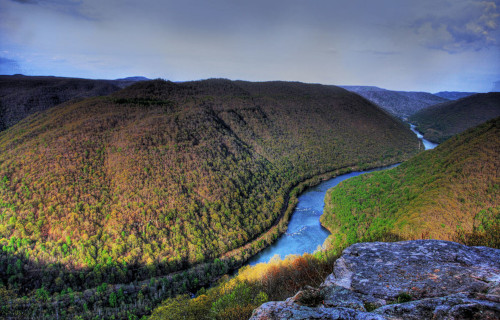
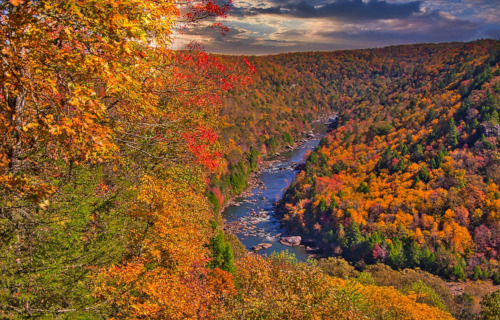
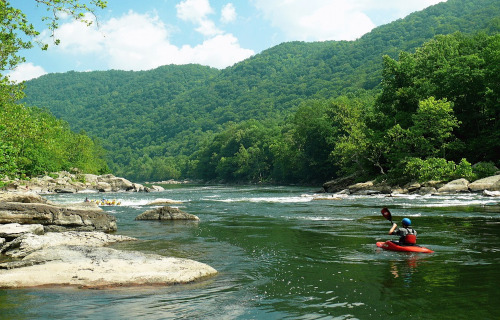



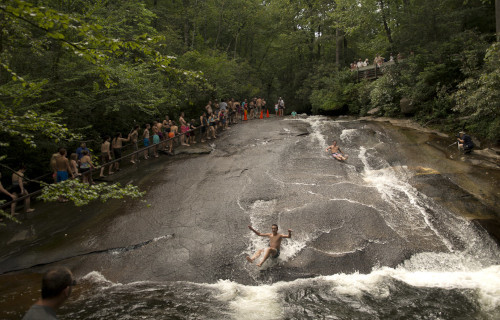
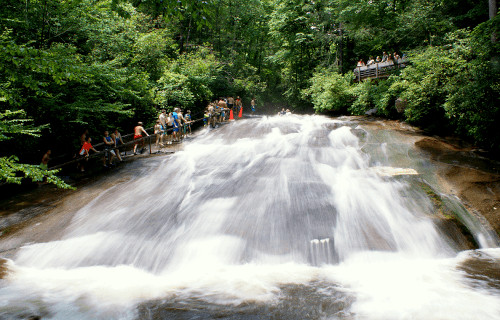
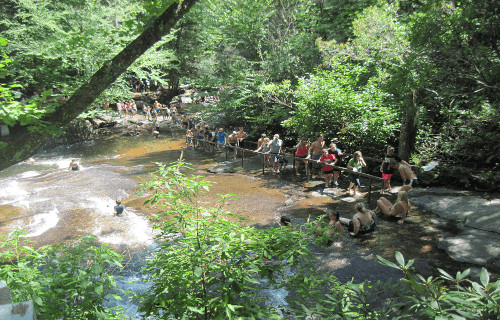
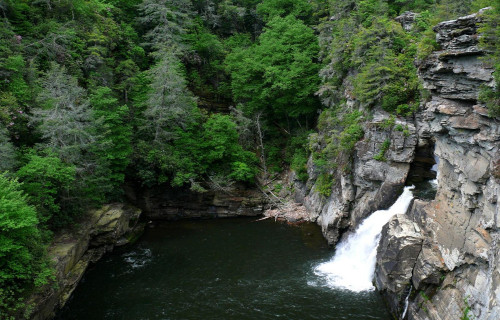
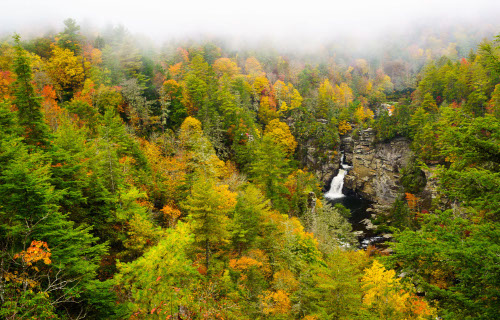
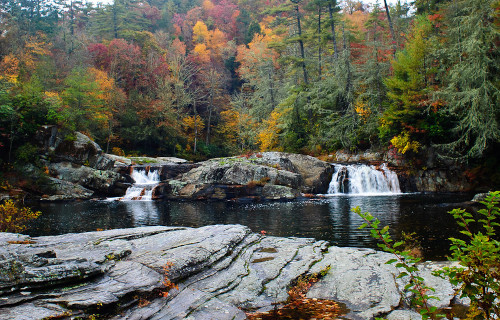









Leave a Reply